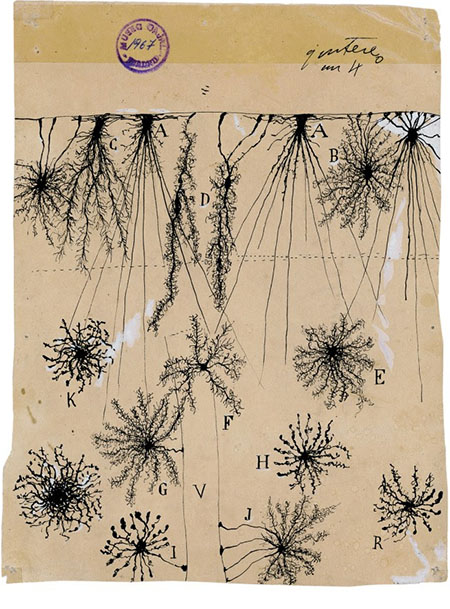Glial cells of the cerebral cortex of a child, drawn by Nobel laureate Santiago Ramón y Cajal (1852–1934), widely considered the founding father of modern neuroscience.
Santiago Ramón y Cajal (1852–1934) was the Spanish neuroscientist who won the 1906 Nobel Prize for his discovery that the nervous system is made of individual cells, or neurons, rather than a continuous network. He developed and refined Camillo Golgi’s staining technique to produce stunningly detailed drawings of neurons, which are still used today to illustrate the structure and function of the nervous system. His work established the neuron doctrine, the fundamental concept that neurons are discrete units.
